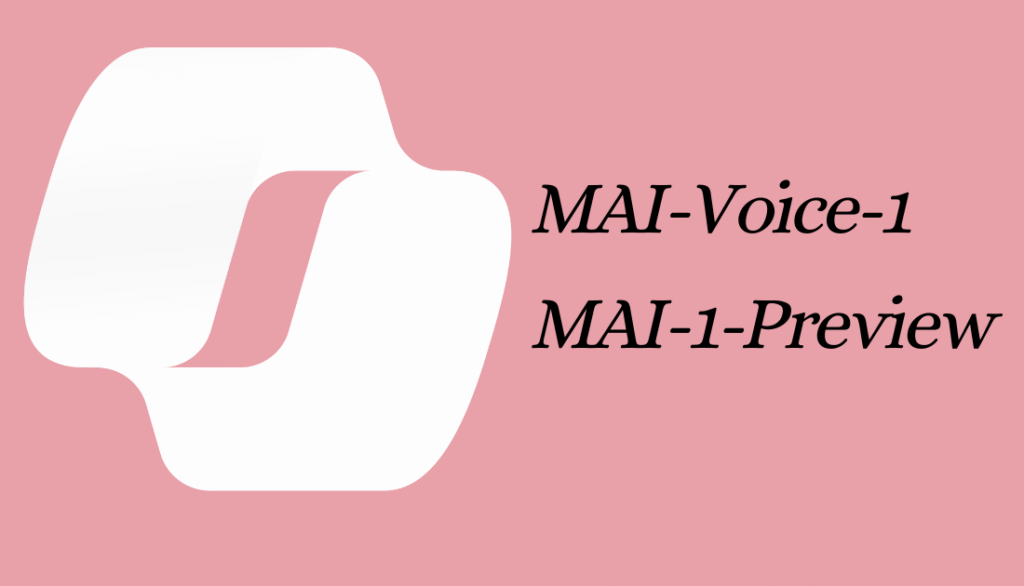Microsoft has introduced its first two foundation models developed entirely in-house, marking a major shift in the company’s AI approach.
Highlights
- Strategic Shift: Microsoft launched its first in-house foundation models, reducing reliance on OpenAI and strengthening long-term AI independence.
- MAI-Voice-1: A speech generation system producing a full minute of expressive audio in under a second, debuting in Copilot Daily (news narration) and Copilot Labs (experimental voices).
- MAI-1-preview: A general-purpose model trained on 15,000 Nvidia H100 GPUs, designed for instruction-following and public testing via LMArena and API.
- Copilot Integration: Both models will enhance Copilot features — MAI-Voice-1 for accessibility and narration, and MAI-1-preview for more natural text interactions.
- Consumer-First Strategy: Microsoft is prioritizing real-world use cases, from narrated news to productivity tools, guided by consumer behavior insights.
- Model Orchestration: Instead of one all-purpose model, Microsoft plans a family of specialized models for voice, reasoning, and productivity tasks.
Until now, the company relied heavily on OpenAI for powering its Copilot services, with smaller fine-tuned models used for specific features.
MAI-Voice-1
The first model, MAI-Voice-1, is a speech generation system capable of producing a full minute of audio in under a second on a single GPU. Unlike traditional text-to-speech tools, it generates dynamic, context-aware audio, adjusting tone, pitch, and cadence naturally during conversations.
Microsoft is introducing MAI-Voice-1 in two ways.
- Copilot Daily → an AI host delivering narrated summaries of the day’s news in a podcast-style format.
- Copilot Labs → an experimental tool where users can input any text and have it read aloud in different voices and styles.
MAI-1-Preview
Alongside its speech model, Microsoft is testing MAI-1-preview, a general-purpose foundation model trained with a mixture-of-experts (MoE) architecture across roughly 15,000 Nvidia H100 GPUs.
Currently available for public evaluation on LMArena and to select testers via API, MAI-1-preview is designed for instruction-following and handling everyday queries.
Microsoft plans to integrate the model into text-based Copilot features in the coming weeks, aiming to make interactions more natural and responsive.
Why This Matters
The introduction of these models represents more than product updates:
- Independence from OpenAI – Building core models internally gives Microsoft more control over its AI direction.
- Competitive positioning – This move aligns Microsoft more closely with Google, Anthropic, and Meta, all of whom are investing in their own foundation models.
- Product innovation – Integration into Copilot suggests upcoming features that are more context-aware, multimodal, and consumer-focused.
Microsoft’s Consumer-Centric AI Strategy
According to Microsoft AI chief Mustafa Suleyman, the company’s AI development is being shaped around consumer experiences rather than enterprise-first deployments.
By leveraging user behavior insights and telemetry data, Microsoft is prioritizing tools that serve real-world needs — from narrated news updates to accessibility features.
Toward an Orchestrated Model Family
Microsoft has also outlined a modular approach, aiming to build a family of specialized models tailored to different use cases.
Instead of relying on a single model for all tasks, the strategy emphasizes orchestration between models, optimizing performance across areas such as reasoning, voice assistance, and productivity tools.
In the near term, MAI-1-preview will start powering text-based Copilot experiences, while MAI-Voice-1 could expand beyond news narration into productivity and accessibility solutions.


